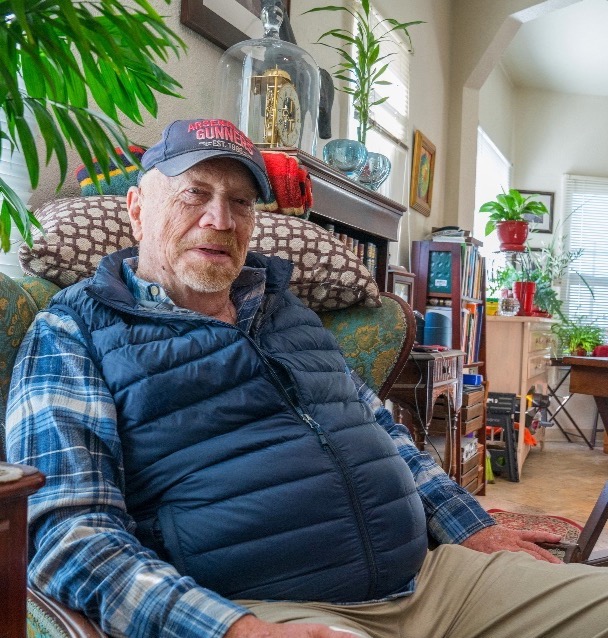The East Bay Asian Local Development Corporation (EBALDC) has engaged in community development and affordable housing efforts in Oakland for over 45 years, advancing a placed-based strategy focused on building healthy neighborhoods. This includes providing affordable rental housing options through new construction and acquisition-rehab, offering resident and youth services, and building collaborations that bring together community members and the organizations that serve them. In response to the rise in displacement and homelessness in Oakland, over the last six years EBALDC has expanded its acquisition-rehab work by purchasing occupied multifamily buildings with minimal renovation needs and existing residents paying relatively affordable rents.


-
Built in 1928
-
41 units, with a mix ranging from efficiency studios to two-bedroom units
-
First Mortgage
-
Housing for Health Fund Equity
-
Sponsor Equity
To grow this work, EBALDC has developed a model that leverages strong relationships with local brokers to identify acquisition opportunities and creative financing strategies, such as developing an internal Housing Acquisition Fund to respond more rapidly in the market. EBALDC’s approach also relies on using location, rent rolls, marketing and building characteristics to infer occupant demographics and incomes, which helps ensure their real estate strategy aligns with their mission of serving low-income households. After completing several acquisition-rehab projects, including two that used Measure KK funds, Kensington Gardens apartments emerged as an opportunity to try a new financing strategy on a high-impact project.
Kensington Gardens is a 41-unit building located in the Lower San Antonio/Fruitvale neighborhood, on the edge of some of East Oakland’s most rapidly gentrifying neighborhoods. Its proximity to BART and the 580 freeway, as well as its historic architectural features, make Kensington Gardens a highly desirable property for speculation or, if EBALDC was able to intervene, for preservation. Combined, the rents that residents were paying and the neighborhood demographics indicated a high rate of lower-income households that would be vulnerable to displacement in the event of a significant rent increase. The building had already been sold once within the previous five years, and while the most recent landlord represented an improvement in property management, there were still issues with deferred maintenance and inaccessible on-site assistance. With EBALDC’s established track record as a local developer, they were in a strong position to compete when the property came up for sale in 2018. In the absence of available Measure KK funds, financing the acquisition and initial rehab work was made possible by a below-market equity investment through Enterprise’s Housing for Health Fund.
This investment, combined with a senior mortgage, will allow EBALDC to do a first round of health and safety improvements and maintain affordable rents through the 10-year period prior to recapitalizing with equity from the Low-Income Housing Tax Credit. EBALDC will also execute a Health Action Plan to identify and track resident health indicators over the next several years, helping ensure that housing stabilization efforts lead to positive health outcomes.

“Anytime a building is being sold, you always have a sense of insecurity. I always worry about having to move out of the area. And I’d really like to stick close to my kids.”
– Darrell Johns, resident of Kensington Gardens
EBALDC completed purchasing the building in early 2019 and almost immediately began renovation work, including seismic retrofits and in-unit upgrades. According to resident Darrell Johns, many in the building didn’t even know it was for sale until EBALDC began their outreach efforts to inform residents of their purchase, introduce the organization and explain their process and intentions. Johns, a 76-year-old California native with health conditions that impact his mobility, was initially wary. “Anytime a building is being sold, you always have a sense of insecurity. I always worry about having to move out of the area. And I’d really like to stick close to my kids.” To cover his bases, Johns researched available nearby rentals only to find they were far beyond his price range. “I found places out in Antioch and Vacaville that were more or less affordable. I figured if this priced me out, I would probably have to move quite a ways away from my kids,” said Johns. His two adult children live in Oakland and Piedmont with their respective families.
His fears were alleviated once the EBALDC transition ramped up and he saw his rents remain at their current level. EBALDC has learned from previous acquisitions that early tenant engagement and using their own service-oriented property management and resident services staff are key to building trust with residents, especially as disruptive construction work begins. Johns was pleasantly surprised by the transparency and abundance of shared information compared to the previous building sale. The initial interviews and income certifications were a bit of a hassle, Johns said, though he considers it a worthwhile trade-off as issues like faulty electrical systems and broken locks have been repaired quickly. An anthropologist in his earlier years, Johns reflected on the value of this work in the face of the “urbanization and gentrification that’s driving families out of the area.” Now that he feels stable in his well-maintained home, he is able to go back to focusing on things he cares about most: his family, advocating for low-income households through volunteer work, and seeing live music. “I think this is a great program,” Johns says, “and I hope it expands.”
Sources
-
James Yelen, “Preserving Affordability, Preventing Displacement: Acquisition-Rehabilitation of Unsubsidized Affordable Housing in the Bay Area,” Enterprise Community Partners, 2020. https://www.enterprisecommunity.org/sites/default/files/2021-07/preserving-affordability-preventing-displacement.pdf